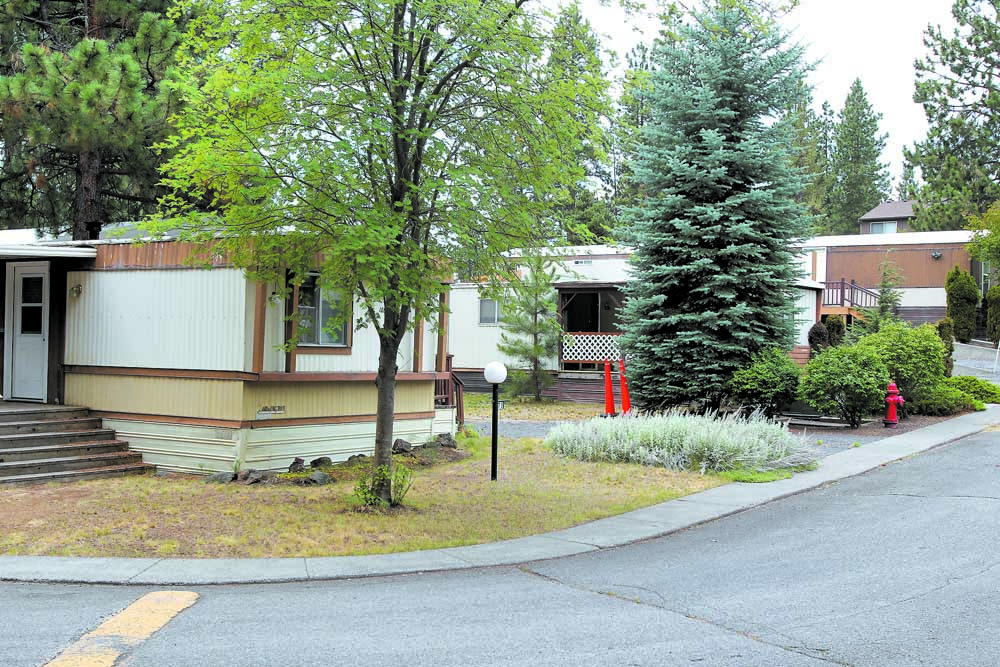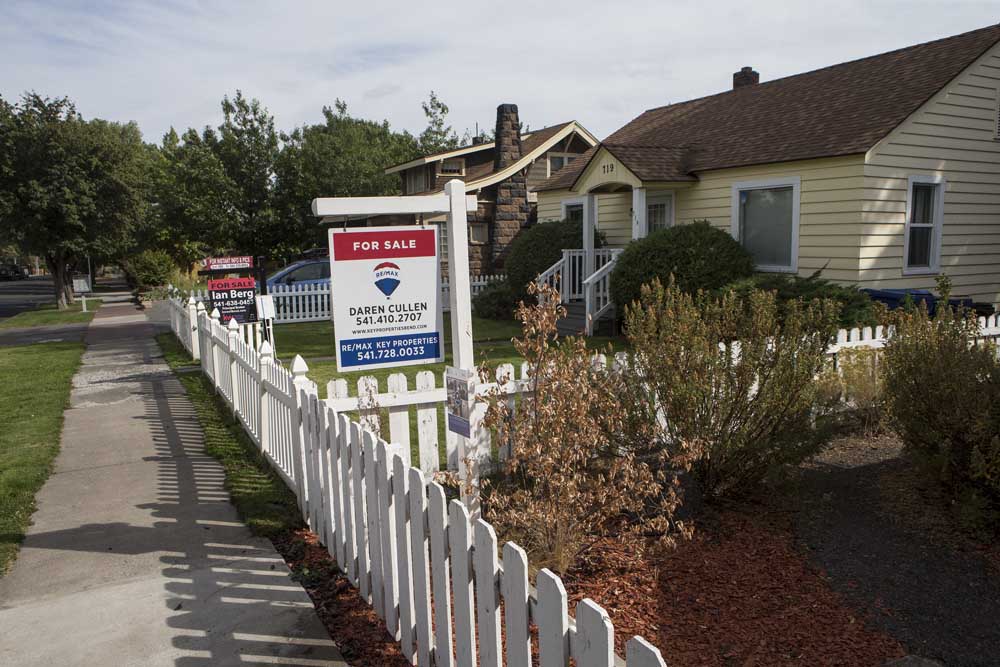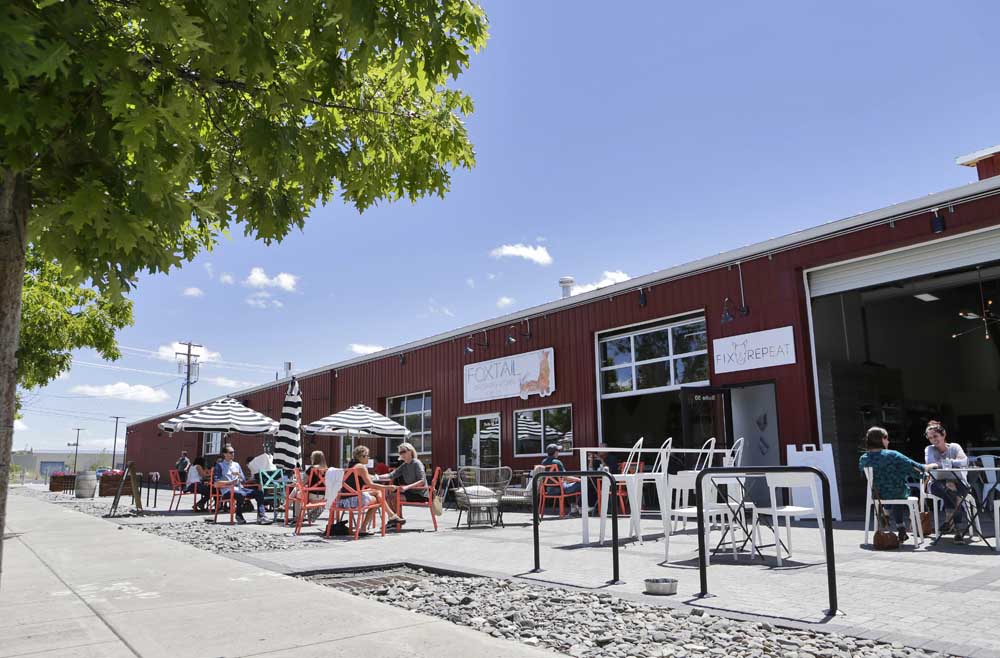Parks in peril
Published 12:00 am Sunday, July 21, 2019

- West Side Pines Cooperative is a Bend mobile home park that was bought by its residents. (The Bulletin file photo)
In the three decades that Susan Stoltenborg has lived near Eugene, she had to move five times as her rent jumped, her lease ended or poor conditions drove her out.
Each move pushed her farther out from the central city. By 2018, she was ready to invest in stability.
Trending
She took out a 20-year loan and bought a double-wide at the Patrician, a well-kept, friendly, 55-and-older mobile home park in Springfield where she and her daughter could live with a dog and a cat and a front yard.
Her newfound permanence was short-lived.
The Patrician sits in a growing tech-industrial section of Springfield where the landowner sees an opportunity to make money by closing the park and building a new convention center. The mobile home park’s predicament places it in the middle of a national conversation about how to save one of the most prevalent forms of unsubsidized affordable housing.
Mobile home parks are disappearing at a disquieting pace. The state has tracked more than 73 park closures in the last two decades, amounting to 2,700 homes lost. In the last two years, another 40 mobile home parks have filed notices of intent to sell — likely meaning either an eviction or major rent hike for 3,200 households.
It’s been decades, meanwhile, since anyone built a new park.
Housing activists are alarmed at the precariousness of the state’s stock of 60,000 remaining mobile homes, particularly at a time when subsidies for affordable housing can’t keep up with the need.
Trending
The state has quietly become a leader in an innovative program to recruit nonprofits to step in and buy the parks or allow residents to buy them.
The Legislature this year approved $9.5 million toward Oregon’s effort to preserve the parks. It also set aside $2.5 million to replace rundown mobile homes.
But saving this type of affordable housing remains an uphill battle. Many cities see mobile home parks as an obstacle to redevelopment, and park owners — many well into retirement age — can sell them for tens of millions of dollars.
The mobile homes left — almost all of them a product of the private market — nearly equal the number of government-subsidized affordable housing units in Oregon. And they serve similar populations: mostly low- or fixed-income households, among them families and retirees.
For many of the residents, their life’s savings are in their homes, and they have little income to buy something new. There also is little payout for displaced manufactured homes.
In Stoltenborg’s case, she owns her home but rents the land at a modest rate. In May, about five months after she moved in, she got a notice that the Eugene hotel developer who owns the mobile home park wants to rezone the site for his project.
“It truly is a springboard to homelessness,” Stoltenborg said. “I really don’t know what I’m going to do.”
Intractable issue finds an advocate
A wave of park closures in the 1970s first began to worry state housing officials, so they added owners of mobile homes to many protections already afforded to renters, among them that landlords couldn’t unilaterally amend leases. They also restricted evictions without cause for mobile home owners.
But parks again grabbed the state’s attention in the mid-2000s amid another spike in closures. The real estate market was booming, and big plots of land were a prime target for speculators.
“There were investors cold-calling park owners and offering them buckets of money,” said John VanLandingham, a longtime Legal Aid attorney in Eugene who often advises the Legislature on landlord-tenant issues.
Most of the parks at risk date to the 1950s and 1960s, when they had cropped up to serve a post-World War II rush of aspiring homeowners who couldn’t afford traditional houses. Many had fallen into disrepair in the years since, and the older homes lacked any semblance of energy efficiency.
Still, when parks closed, residents were left in the lurch. Despite the name, mobile homes can rarely survive a move. Those that can still cost tens of thousands of dollars to move. That’s if another park has a vacancy.
The issue seemed intractable. The state can’t prevent park owners from selling the land, and limiting redevelopment could leave the state liable for its potentially reduced value. And no one blamed the mom-and-pop park owners for cashing out.
In 2004, VanLandingham attended a conference that introduced him to a model that New Hampshire had found for preserving mobile home parks: selling them to their residents, who would run them as a cooperative.
The visit set off more than a decade of advocacy to save mobile home parks, even as they continue to close or become less affordable.
“I think we would lose a lot if we just gave up on manufactured homes,” VanLandingham said.
The Oregon Legislature got on board with his cooperative scheme and passed laws the following year that require mobile home park owners to give notice to residents when they plan to offer their park for sale. That gives residents a short window to decide whether they’ll make a counteroffer.
Owners don’t have to accept the offer, but a dozen have.
Residents can prevent takeover
Two years ago, residents of a 142-home park in Gladstone received a notice from the owner that he had received an unsolicited offer to buy the park. He suggested residents might want to buy it instead.
Kim Baller, a resident of eight years, sprang into action. He knocked on neighbors’ doors and called an impromptu meeting.
“I just thought we needed to do something,” he said.
He knew that even though he owns his mobile home, the real power lies with the person who owns the land.
And he’d seen, at least secondhand, what happens when a park sells.
Baller’s cousin lives in a nearby mobile home park and saw his rent skyrocket when a private investment fund bought it. The residents there struggled to afford the land under their homes when rent rose that much.
Residents of mobile home parks often are seniors who use their retirement savings to buy a home with cash — the cost of a home can vary widely, but it’s usually between $30,000 and $70,000 — and then pay rent for their space using their Social Security income. Others are low-income singles or working families priced out of the traditional housing market. Some are very low-income renters, who own neither the land nor the mobile home but rent both, often for less than a typical apartment.
Few have the capacity to keep up with recent interest from institutional investors who figured out that residents of mobile home parks are essentially a captive audience with few alternatives but to absorb double-digit rent increases each year.
Websites that advertise how to raise rents on recently acquired parks try to entice new investors to the market, while larger private equity firms say they’ve bought hundreds of parks and tens of thousands of home sites throughout the country.
The homeowners have little safety net.
Mobile homes often don’t grow in value like a traditional house, so the resale value is often at or below what owners paid for them. If a park closes, its owner is required to compensate residents who own their home based on its size. But a homeowner like Baller would get only $9,000 at most in compensation — not nearly what he paid for his home and likely not enough to move it elsewhere.
The alternative to an investor owner isn’t necessarily better for park residents — they could attract a developer instead and face closure like the Patrician.
In much of the state, mobile home parks, with their wide, flat swaths of easily cleared land, make attractive targets for denser housing or large commercial developments. Local governments often are excited about the economic return those investments can bring.
Co-ops still face obstacles
Buying the park was easier said than done. The Gladstone park residents weren’t organized and they certainly didn’t have millions of dollars to spare.
So CASA of Oregon stepped in. VanLandingham recruited the nonprofit, formed in 1988 to help house farmworkers, when he came back from New Hampshire. It has become the state’s go-to organization for forming homeowner cooperatives to buy and self-govern mobile home parks.
There are 12 cooperatives around the state, with more than 500 homes between them.
Park residents face steep odds. Landowners have every incentive to take a private-market offer, which usually comes with fewer complications and allows them to cash out quickly. Co-ops need a mortgage — often, though not always, through a nonprofit lender — and that can slow things down by several months. New legislation this year created a state lending fund that would allow the state to close deals more quickly.
In Gladstone, the longtime park owner was sympathetic to residents and waited for their financing to come together.
That didn’t end residents’ troubles. They formed a board — Baller became the secretary — and hired a property manager to deal with park issues, but it took a while for residents to get used to not having an on-call manager who will make repairs or change a bulb in the park’s street lights.
“That’s not going to happen,” said Marian Chariat, the board president. “This is a cooperative. You have to go to the store and buy a light bulb.”
To cover the cost of the now-in-place mortgage, residents will also see a rent increase this year — a small one, in the neighborhood of $25 a month, but that can be a lot to the people who live there, many who are retired on a fixed income.
The newly renamed Two Rivers Homeowners Cooperative is one of the largest parks organized by CASA and now one of its great successes, according to Julie Massa, who helps residents navigate the process. They’re planning big investments, like the replacement of aging pipes and roadways.
The Gladstone park was in many ways an ideal candidate for a cooperative. It was well maintained with mostly owner-occupants who had already formed a close-knit community and had strong leaders.
But the model doesn’t work everywhere. Some parks are too rundown for any bank to extend a loan, or they’re occupied mostly by renters who couldn’t afford a loan on their own home, much less the land where the park sits.
Portland park preserved
The Oak Leaf Mobile Home Park in Northeast Portland showed years of neglect when residents learned in 2016 that the owner planned to sell to an apartment developer.
Some of the 62 residents had lived there for decades; some just for a few months. Most hated the condition of their homes and the park. Strangers had taken over abandoned trailers. Too many homes were crammed onto the site for the zoning — and for the overtaxed sewer lines. Few moved there for the atmosphere, but because it was the only place they could afford.
“It was horrible,” said Galen Harden, who had moved in that year when he took over another resident’s lease. “It was crazy when I first moved in.”
Nonetheless, residents mobilized to save the park — one of the gentrifying Cully neighborhood’s few remaining housing options that were within reach without a housing voucher.
They marched through the neighborhood to raise awareness of their plight, then packed Portland’s City Council chambers to urge commissioners to help.
“I was so grateful to have my own place, where I can go in my own house and shut the door and block out the world,” Harden said. “We fight for that. We fight to keep that.”
The city came through with a $1.25 million loan to buy the park. Neighborhood nonprofit Living Cully bought the site initially and then sold it to nonprofit St. Vincent de Paul of Lane County, which has taken over eight similarly dilapidated parks up and down the Interstate 5 corridor that have average incomes too low to form cooperatives.
“There are parks that are well past their useful life, but they provide probably the lowest-tier affordable housing there is,” said Terry McDonald, St. Vincent’s executive director. “If they go away, the people who live there are just going to be on the street.”
As the new owner of the Oak Leaf, St. Vincent De Paul replaced dozens of mobile homes in disrepair, replaced the water and sewer lines and installed new security measures. Residents, who had to stay temporarily in motel rooms or apartments nearby while the work was underway, will move back this summer.
The near-closure also helped prompt the city to act to preserve its 66 mobile home parks, representing more than 3,200 homes.
The City Council last year approved a special zoning overlay for mobile home parks intended to prevent their redevelopment. Any zoning change would ultimately need the council’s sign-off.
‘We’re going to be in trouble’
The homeowners at the Patrician worry they will face a dire fate.
Most invested their retirement savings into single- and double-wides with the idea it would be the last place they live.
Some came to be near children and friends. Some just wanted to live out retirement in a place of their own choosing.
But that place is already faced with rent increases each year. The $635 monthly payment for the land the homes sit on will jump to $695 in October. On top of that, the seniors who live there are caught between trying to fight to save their home and making plans about where they could go.
“This is the real deal,” Stoltenborg said. “We’re going to be in trouble.”
Richard Boyles, the park owner, said he’s made no secret of his plans to redevelop the park he bought 13 years ago.
The closure of the park is a foregone conclusion, he said, given its aging infrastructure and rising maintenance costs. He’s seeking a change to a commercial zone.
“The property will eventually be redeveloped,” Boyles said. “It’s really a policy question for city leaders and elected officials whether they want to see the property redeveloped as a low-density residential, the current zoning.”
For now, the residents are in a holding pattern.
After a tense debate, the Springfield planning commission recommended in a 4-3 vote that the City Council deny the rezoning of the park. They added that the City Council should weigh the city’s goals of maintaining affordable housing against the economic benefit redevelopment could bring.
The council will have the final say in September.
Boyles, meanwhile, pointed out that he’d be well within his rights to close the park anyway — and that doing so might make the rezoning decision easier for the City Council.
“The logical thing for me to do to solve this problem when it comes to the council to issue a closure notice,” he said. “There are good reasons for the City Council ultimately to approve the rezoning. I hope I don’t have to give them additional good reason.”








